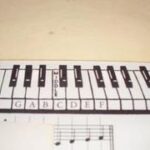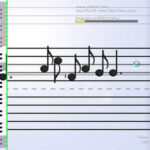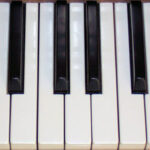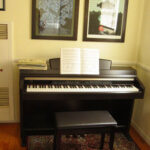If you are an aspiring jazz or blues musician, it is absolutely necessary for you to learn how to play seventh chords. Even if you don’t like the blues or jazz, you should still learn them because they are used in other styles also. The three main types of seventh chords are major, minor, and dominant. If you understand how to play a major or minor triad, then you will have little trouble.
You should know by now that a major triad is formed by playing the first, third, and fifth notes of the major scale. In C major this would be C, E, and G. To play a major seventh chord, you simply add the seventh note of the scale to the major triad. B is the seventh tone in the C major scale, so a C major seventh chord would consist of C, E, G, and B. The abbreviations for a major 7th chord are “Major 7”, “M7”, and “Maj7”. The next time you see one of those on a piece of sheet music, you should know what to play.
Now that you know how to play a major 7th chord, you can easily find the minor seventh. The only difference between the two are the third and seventh notes. If you take a major 7th chord and lower the third and seventh notes by a half step, you will have a minor seventh chord. C, Eb, G, and Bb are the notes that form a C minor 7th chord. Common abbreviations for this chord are “m7”, “min7”, and “-7”.
The final chord that you are going to learn today is the dominant seventh chord. It is formed using the first, third, fifth, and the flatted 7th note of the major scale. A simple way to remember this chord is to take a major 7th chord and lower the 7th note a half step. Dominant seventh chords are abbreviated using “7”, “Dominant 7”, or “Dominant seventh”.
Remembering the formation of these chords can be difficult at first, but with practice you can play them easily. Just make sure you understand the difference between the major, minor, and dominant seventh chords. Also, make sure you use the correct fingering when you begin practicing these chords. For your right hand, it is best to use the 1st, 2nd, 3rd, and 5th finger. Your left hand should play them using the 1st, 3rd, 4th, and 5th fingers.




